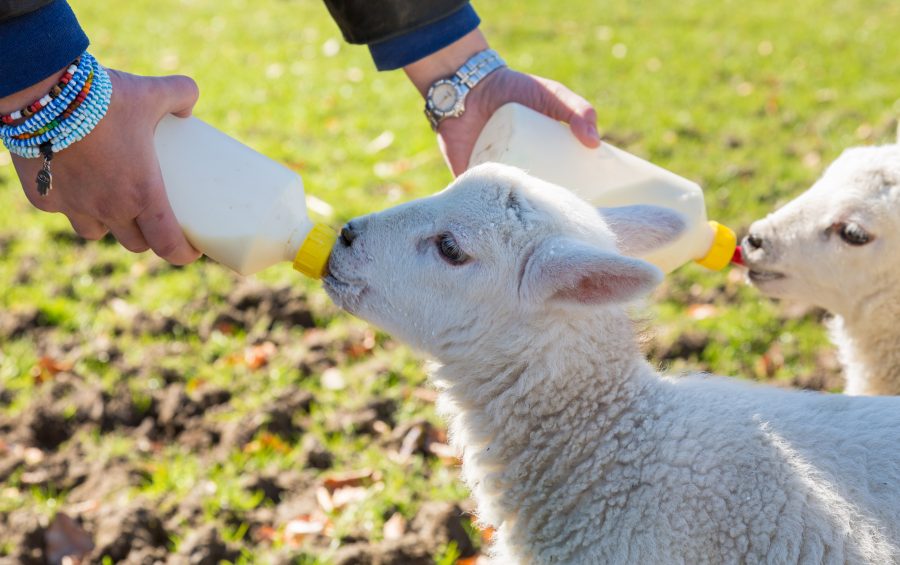In this article extract taken from the Spring issue of The Country Smallholder magazine, Liz Shankland explores the highs and lows of playing foster parent to motherless lambs.
Problems at lambing time invariably mean that some lambs will end up orphaned, abandoned, or, competing with siblings to suckle. Lambs may have to be bottle fed when the ewe:
- dies during or after giving birth;
- rejects one or all of her offspring;
- cannot produce sufficient milk;
- produces weak or sickly lambs which are unable to suckle naturally.
As a sheep keeper, you may find yourself dealing with one of these scenarios and having to quickly adjust to a new daily schedule. You will have to cope with some tough, demanding weeks, during which you will be constantly buying, mixing, and feeding milk replacement powder, and pushing other jobs aside while you monitor health and development.
Not for the faint-hearted
It’s not a challenge for the faint-hearted, and many farmers and smallholders choose not to do it, giving away or selling their time-consuming ‘pet’ or ‘cade’ lambs. But for every person who decides not to go down the hand-rearing route, there will be many others who will relish the opportunity.
Imagine being able to cuddle a sweet, fluffy little creature in your arms several times a day while you feed it and watch it grow. What’s not to like? Those of us who have done it will tell you that the reality can be very different. It can be very tempting – particularly if you are at the start of your smallholding journey and have few animals on site – when an opportunity to take in some unwanted lambs arises.
You may have farming neighbours who are too busy to do the rearing themselves, and it could seem like the ideal way to start up your own small, tame flock without much of an outlay.

© Liz Shankland
Consider the costs
You might see lambs offered for as little as £10 each – or even free – and that can sound like a bargain. But start by considering the cost of specialist milk powder. There are lots of different brands on the market, but, just as an example, a 10kg bag of Lamlac will cost you around £50. The manufacturers say that a lamb will need at least 9.5kg of their powder (to make 47.5 litres milk) to take it through to weaning at 35 days old.
Bear in mind that lambs which are fed from an ad-lib feeder (e.g. the multi-teated SCA Shepherdess, designed so that multiple lambs can feed themselves) tend to drink more, and can also take longer to wean, because they are less likely to eat forage or pelleted feed.
Breaking the bond
People hand-rear for a whole host of reasons. You may be doing it to build up a foundation flock of people-friendly sheep which will be easier to catch and handle, or you may not have any plans for breeding, and just want to keep a few pets for grazing purposes. If your bottle-fed lambs are destined for the abattoir, you will have some tough decisions to make. You need to be sure, right from the start, that you will not get too attached and that you will be able to let go when the time comes. Easier said than done when you have spent every day lovingly feeding and getting to know them. If you have any doubts about your willpower, set some boundaries right from the start. Rule one is not to allow your lambs to become part of the family. Definitely don’t take them into the house to feed – build a pen in an outbuilding and do it there. You will feel like the cruellest person in the world when the bottles are empty, you turn around and close the door, and hear them calling to you, but it really is the only way.
This article extract was taken from the Spring edition of The Country Smallholder. To read the article in full you can buy the issue here.
To receive regular copies of The Country Smallholder magazine featuring more articles like this, subscribe here.
For FREE updates from the world of smallholding, sign up for The Country Smallholder newsletter here.








